Abstract
The systematic position of the so-called ”species” of Leishmania is examined and an attempt made to determine their phylogenetic relationships. The morphology of the organisms as seen by light- and electron-microscopy is described; neither method provides useful criteria for the determination of species. The behaviour of the parasites in insect and in vertebrate hosts offers a better method of classification. In this way, the species may be divided into 4 main groups, comprising the mammalian species involving man, the distinctive species L. enriettii in the guinea-pig, those infecting lizards, and species apparently in various stages of evolution in phlebotomines. The so-called ”human” group is divided into visceral forms (originating chiefly in wild canidae) and cutaneous forms (probably of rodent origin). The named species of the former group include L. donovani and L. infantum. The cutaneous species include L. tropica tropica (=minor), L. tropica major, L. brasiliensis, L. peruana, L. guyanensis, and L. mexicana. L. pifanoi is probably not a distinct species but represents various forms as modified by the failure of cell-mediated immunity in the host. Leishmanial infections can be identified first by ascertaining the geographical area where the infection was acquired, and then by more or less complicated laboratory investigations including characteristics in culture, serological tests, the response of special hosts in terms of symptomatology, and the behaviour of the parasite in the phlebotomine host. No test is infallible, and an effective simple test is urgently needed. The preservation of Leishmania strains is an important research procedure and a method for conserving parasites by lyophilization is described briefly.
Full text
PDF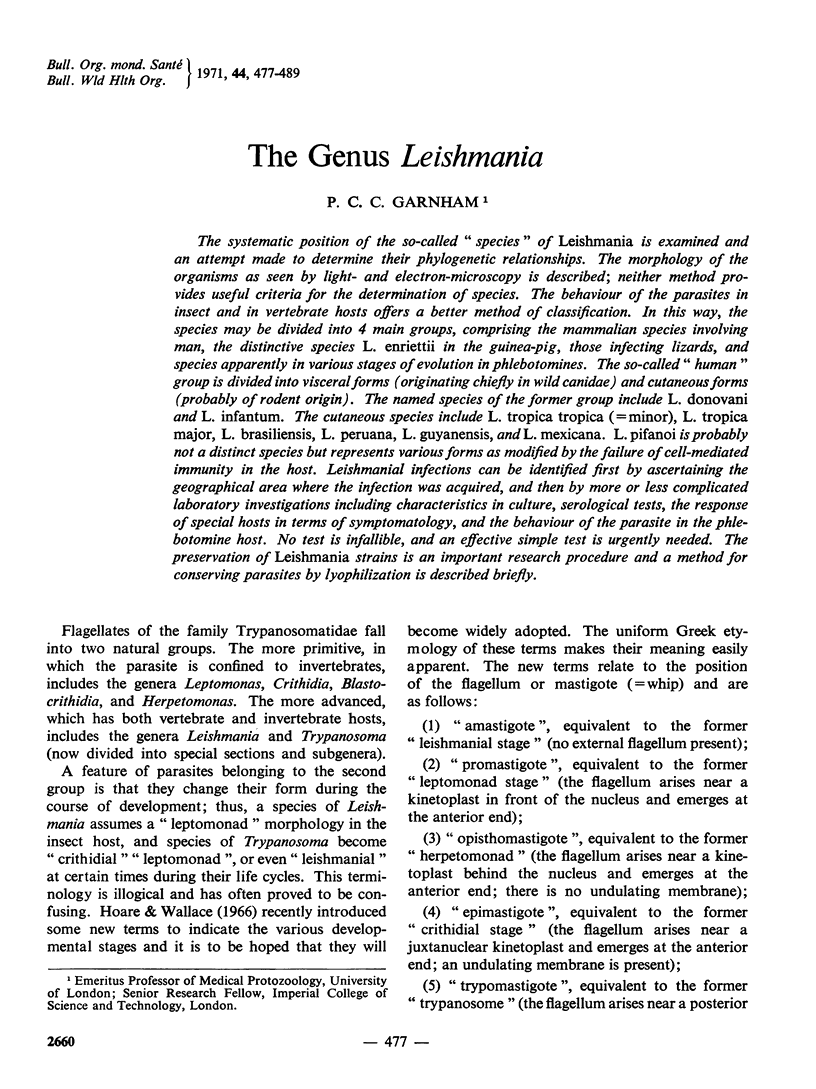
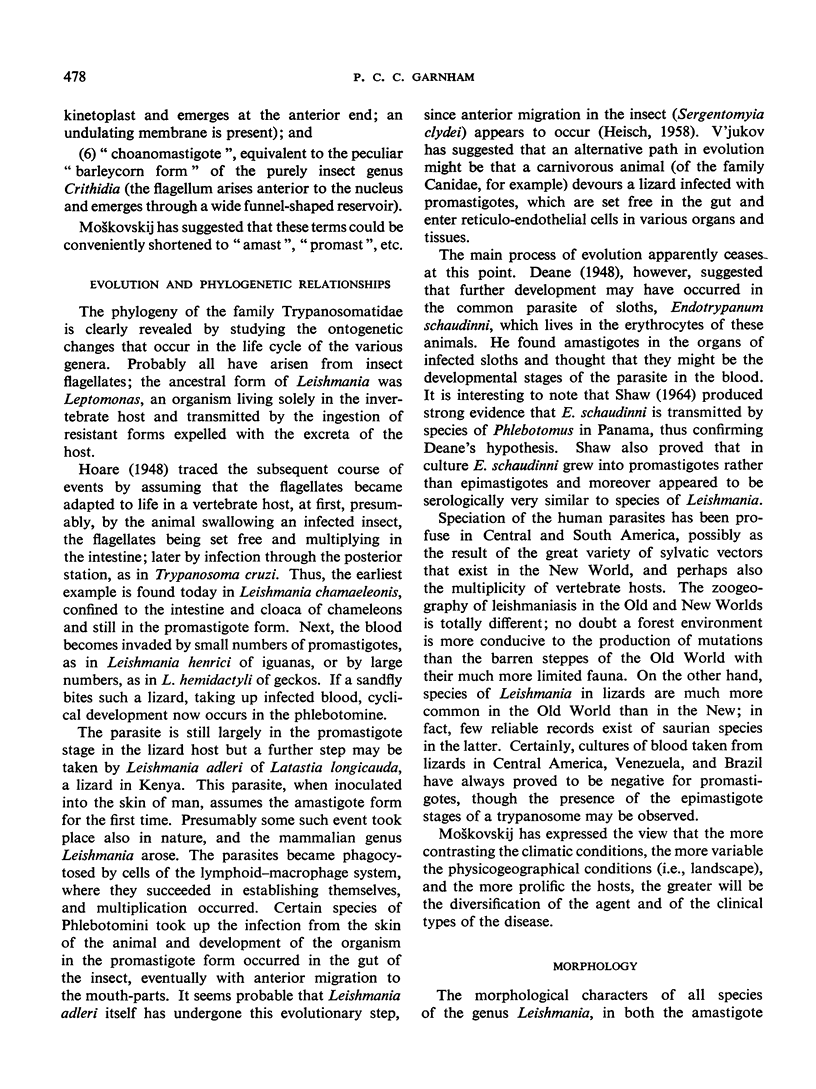
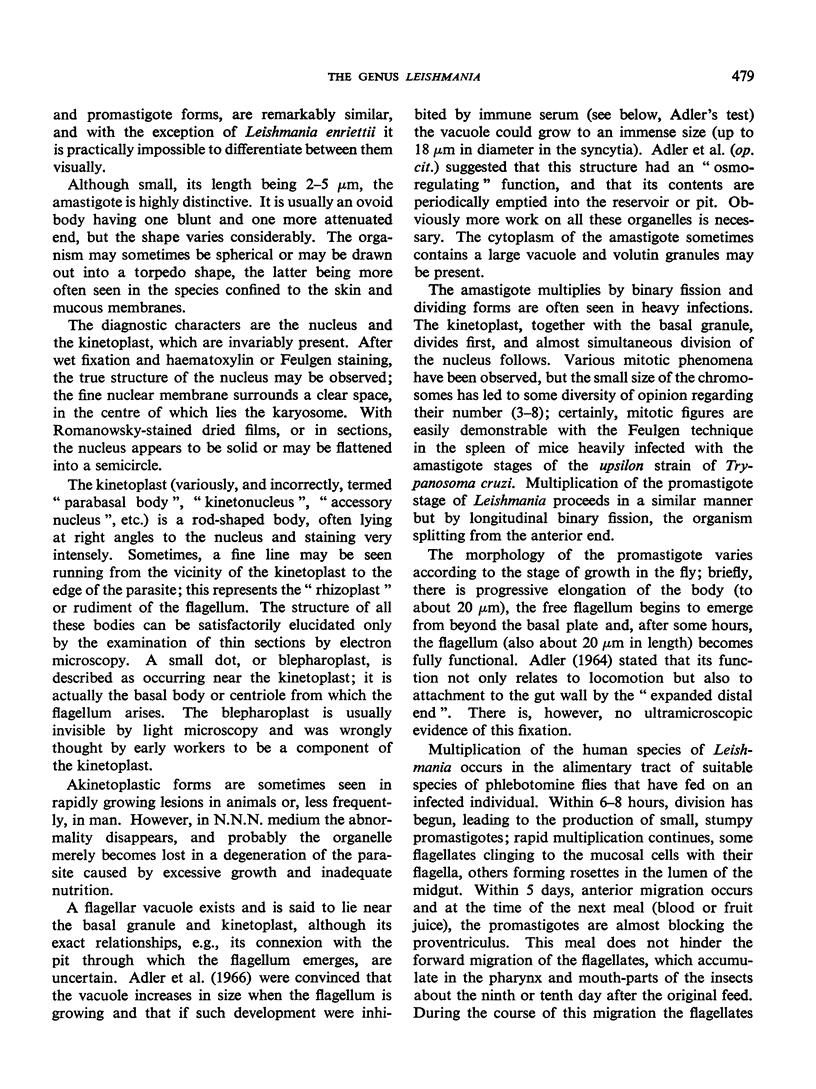


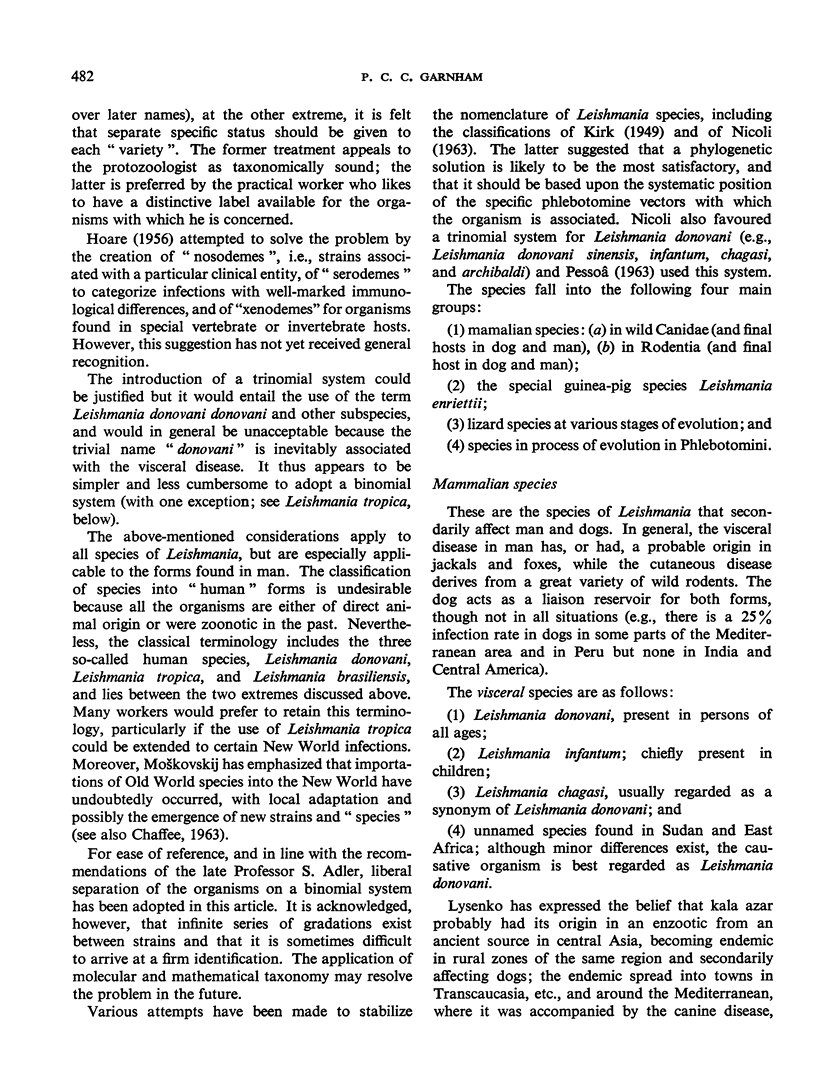
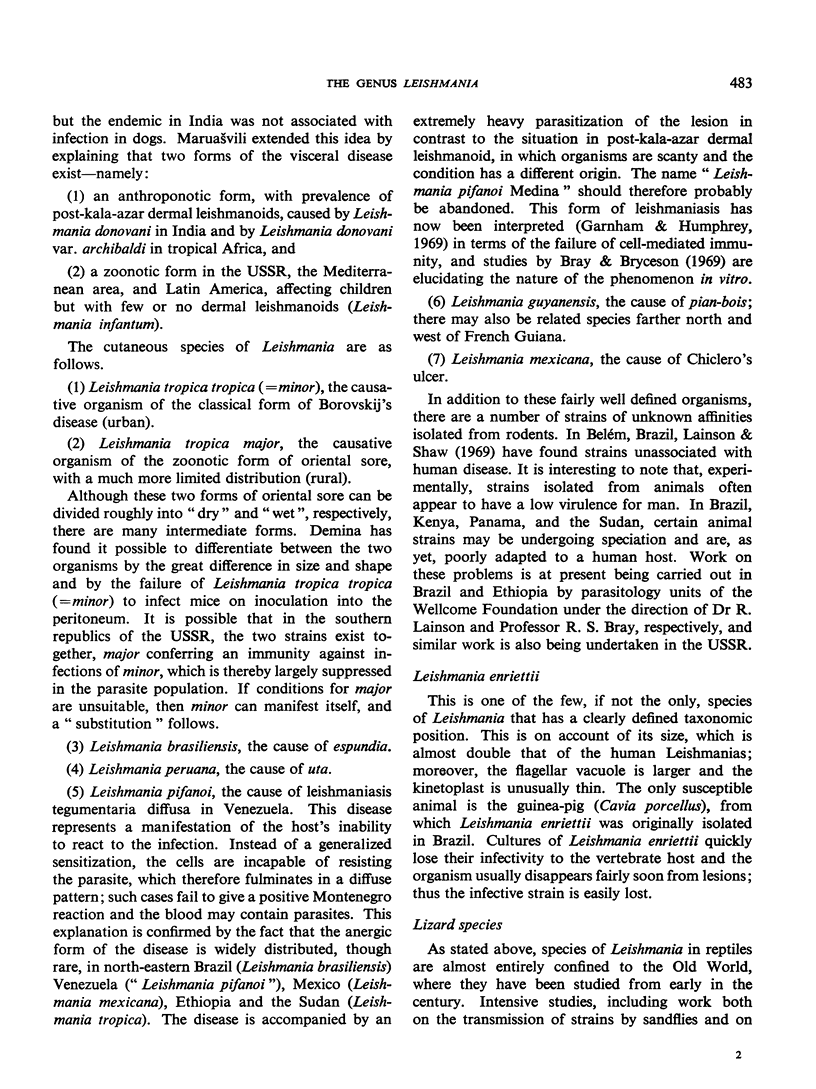


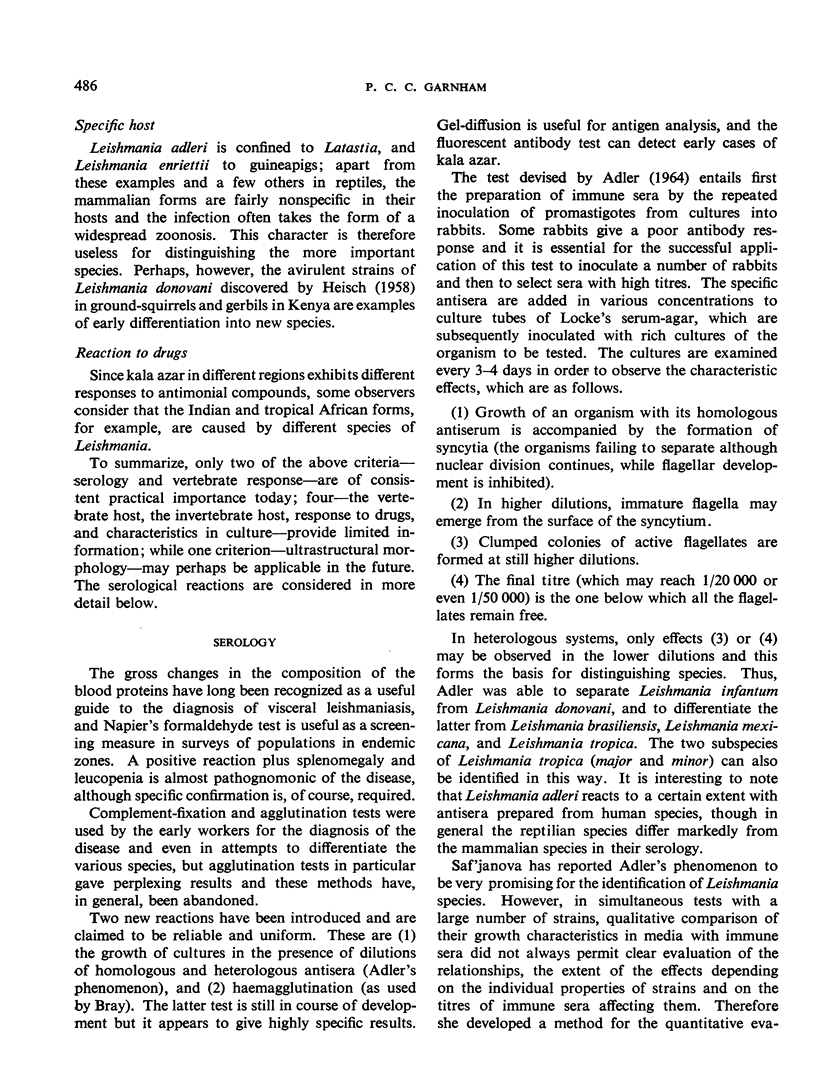
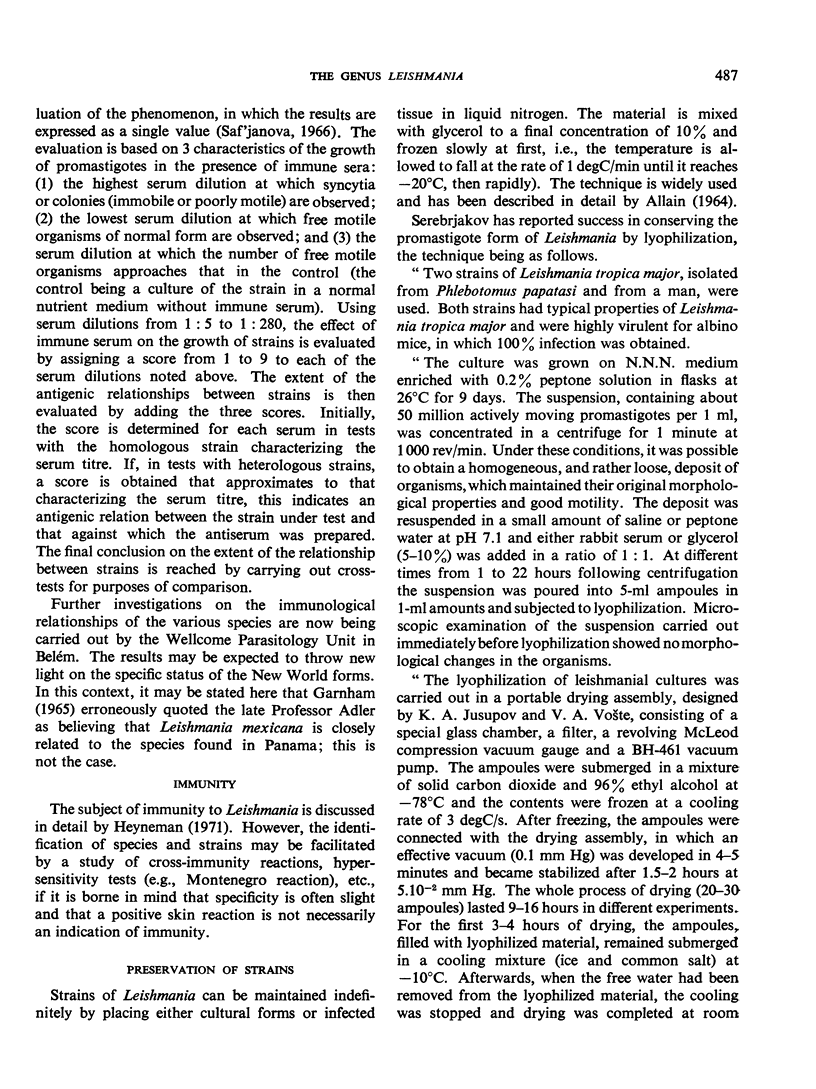
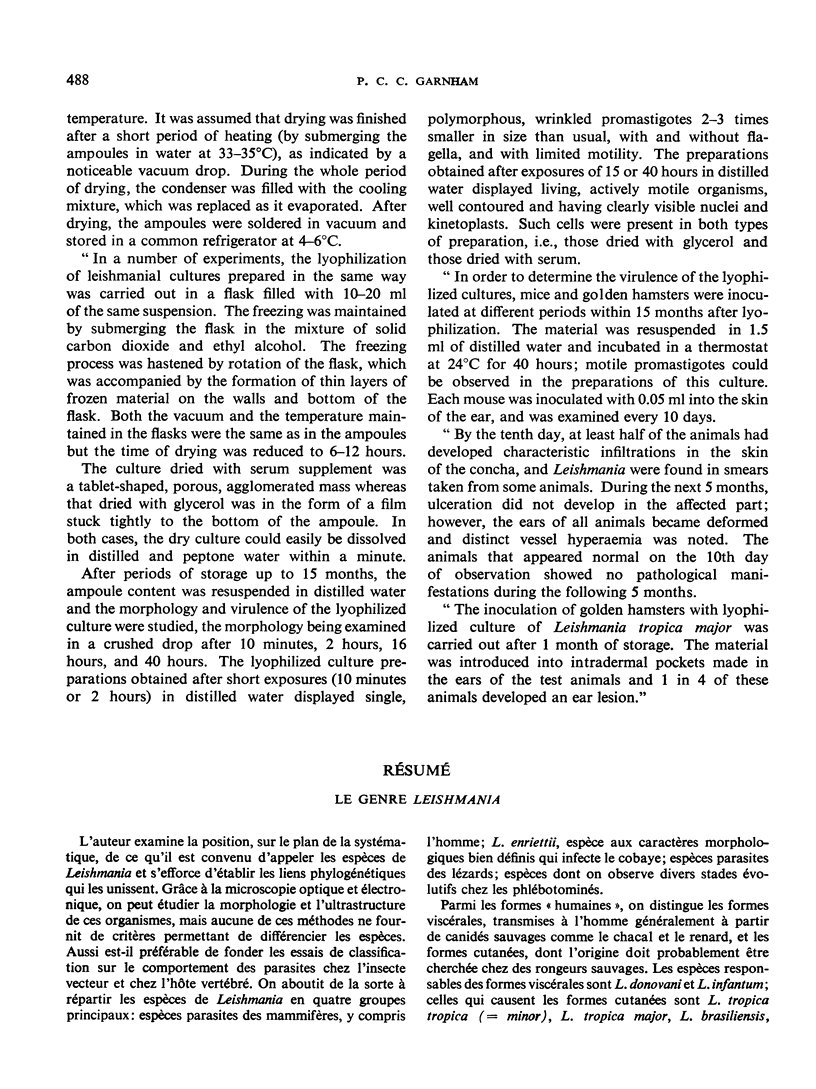

Selected References
These references are in PubMed. This may not be the complete list of references from this article.
- ADLER S. LEISHMANIA. Adv Parasitol. 1964;2:35–96. doi: 10.1016/s0065-308x(08)60586-2. [DOI] [PubMed] [Google Scholar]
- ALLAIN D. S. EVALUATION OF THE VIABILITY AND PATHOGENICITY OF HEMOFLAGELLATES AFTER FREEZING AND STORAGE. J Parasitol. 1964 Oct;50:604–607. [PubMed] [Google Scholar]
- Adler S., Foner A., Montiglio B. The relationship between human and animal strains of Leishmania from the Sudan. Trans R Soc Trop Med Hyg. 1966;60(3):380–386. doi: 10.1016/0035-9203(66)90305-1. [DOI] [PubMed] [Google Scholar]
- Belova E. M. O vysevaemosti kul'tur leptomonad ot gekkonov Gymnodactylus caspius Eich. Med Parazitol (Mosk) 1965 May-Jun;34(3):349–351. [PubMed] [Google Scholar]
- Belova E. M. Reptiles and their importance in the epidemiology of leishmaniasis. Bull World Health Organ. 1971;44(4):553–560. [PMC free article] [PubMed] [Google Scholar]
- Bray R. S., Bryceson A. D. Studies on the immunology and serology of leishmaniasis. 8. The identity of strains of Leishmania from Ethiopian diffuse cutaneous leishmaniasis. Trans R Soc Trop Med Hyg. 1969;63(4):524–527. doi: 10.1016/0035-9203(69)90041-8. [DOI] [PubMed] [Google Scholar]
- Bray R. S., Munford F. On the maintenance of strains of Leishmania from the Guianas. J Trop Med Hyg. 1967 Jan;70(1):23–24. [PubMed] [Google Scholar]
- GARNHAM P. C. THE LEISHMANIAS, WITH SPECIAL REFERENCE TO THE ROLE OF ANIMAL RESERVOIRS. Am Zool. 1965 Feb;5:141–151. doi: 10.1093/icb/5.1.141. [DOI] [PubMed] [Google Scholar]
- Garnham P. C., Humphrey J. H. Problems in leishmaniasis related to immunology. Curr Top Microbiol Immunol. 1969;48:29–42. doi: 10.1007/978-3-642-46163-7_2. [DOI] [PubMed] [Google Scholar]
- HEISCH R. B. On leishmania adleri sp. nov. from lacertid lizards (Latastia sp.) in Kenya. Ann Trop Med Parasitol. 1958 Mar;52(1):68–71. doi: 10.1080/00034983.1958.11685846. [DOI] [PubMed] [Google Scholar]
- Heyneman D. Immunology of leishmaniasis. Bull World Health Organ. 1971;44(4):499–514. [PMC free article] [PubMed] [Google Scholar]
- KIRK R. The differentiation and nomenclature of Leishmania. Parasitology. 1949 Feb;39(3-4):263–273. doi: 10.1017/s0031182000083839. [DOI] [PubMed] [Google Scholar]
- Lainson R., Shaw J. J. Some reservoir-hosts of Leishmania in wild animals of Mato Grosso State, Brazil. Two distinct strains of parasites isolated from man and rodents. Trans R Soc Trop Med Hyg. 1969;63(3):408–409. doi: 10.1016/0035-9203(69)90020-0. [DOI] [PubMed] [Google Scholar]
- NICOLI R. M. LE GENRE LEISHMANIA R. ROSS, 1903. Bull Soc Pathol Exot Filiales. 1963 May-Jun;56:408–416. [PubMed] [Google Scholar]
- RUDZINSKA M. A., D ALESANDRO P. A., TRAGER W. THE FINE STRUCTURE OF LEISHMANIA DONOVANI AND THE ROLE OF THE KINETOPLAST IN THE LEISHMANI-LEPTOMONAD TRANSFORMATION. J Protozool. 1964 May;11:166–191. doi: 10.1111/j.1550-7408.1964.tb01739.x. [DOI] [PubMed] [Google Scholar]
- SHAW J. J. A POSSIBLE VECTOR OF ENDOTRYPANUM SCHAUDINNI OF THE SLOTH CHOLOEPUS HOFFMANNI, IN PANAMA. Nature. 1964 Jan 25;201:417–418. doi: 10.1038/201417a0. [DOI] [PubMed] [Google Scholar]
- Sanyal A. B., Sen Gupta P. C. Fine structure of Leishmania in dermal leishmanoid. Trans R Soc Trop Med Hyg. 1967;61(2):211–216. doi: 10.1016/0035-9203(67)90158-7. [DOI] [PubMed] [Google Scholar]


